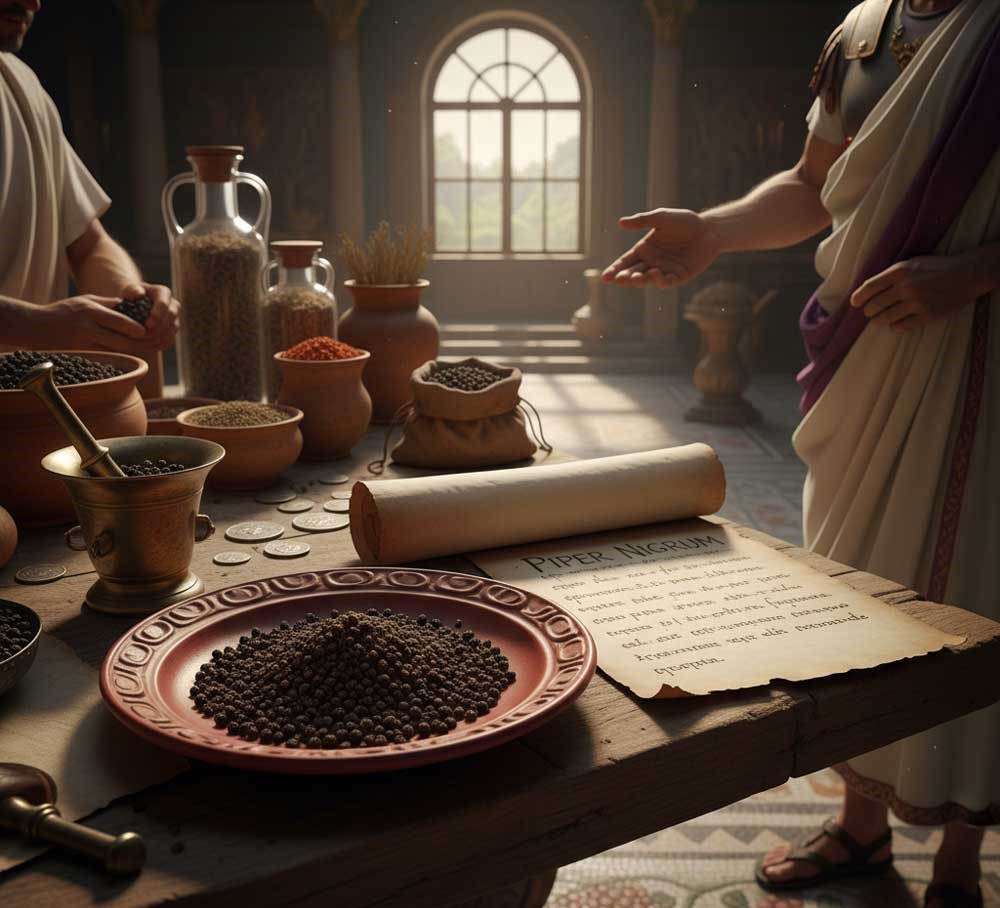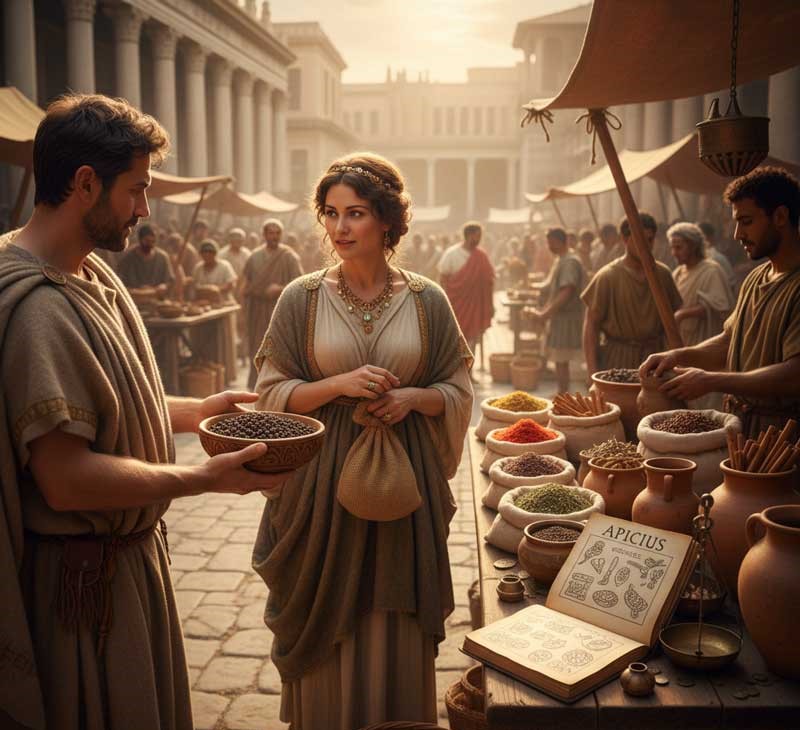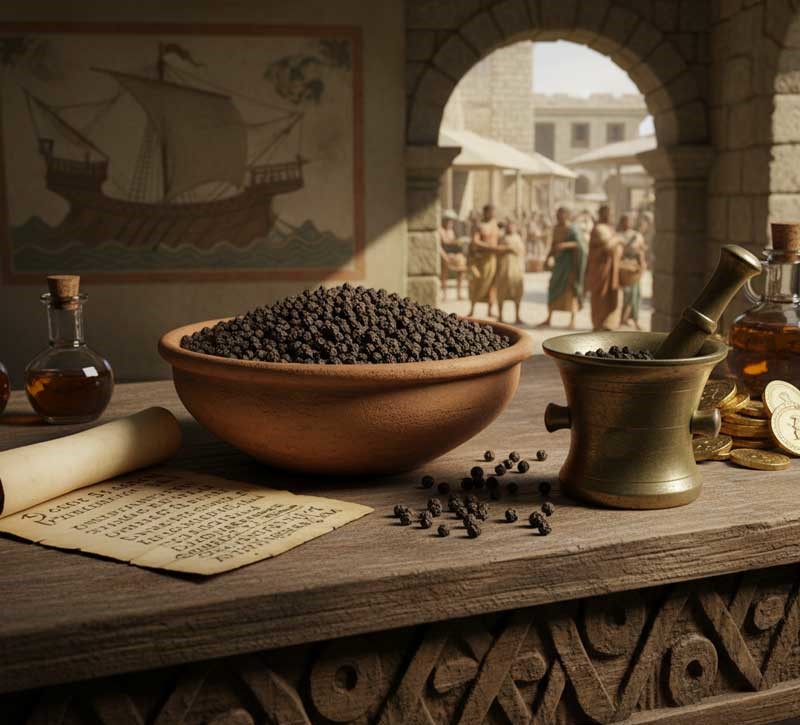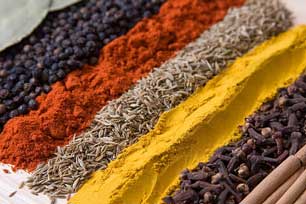
Black pepper wasn’t just a spice—it was once a form of currency. In medieval Europe, debts were settled and dowries paid in peppercorns. By the 15th century, it dominated the global spice trade, making up nearly 90% of its volume. Italian city-states like Venice and Genoa controlled the lucrative trade routes from Asia, raking in massive profits amid fierce competition.
A Spice Worth Its Weight in Gold
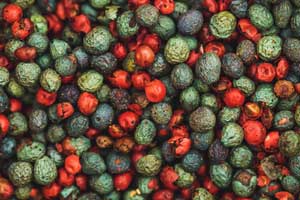
As botanist Todd Brethauer notes in Encyclopædia Britannica, pepper’s ubiquity today hides a dazzling past. “When I’m talking about pepper,” he explains, “I mean the pepper on the kitchen table in hundreds of millions of homes around the world. We don’t even think about it, it’s so common. Five hundred years ago it was worth its weight in gold.”
Indeed, black pepper wasn’t just valuable—it was a form of currency. In medieval Europe, debts were paid and dowries exchanged in peppercorns. In the 15th century, it dominated the global spice trade, accounting for roughly 90 percent of its volume. Italian city-states like Venice and Genoa maintained lucrative monopolies by controlling the routes that brought pepper from Asia into Europe. The profits were astronomical, and the competition was ruthless.
So precious was the spice that dockworkers and sailors who handled pepper shipments often had their pockets sewn shut to prevent theft. Its allure wasn’t just culinary—it represented wealth, power, and access to the farthest reaches of the known world.
The Quest for Pepper and the Age of Exploration
Pepper’s overwhelming economic pull reshaped global history. The desire to bypass Italian and Arab middlemen in the spice trade inspired some of the most consequential voyages of the Age of Exploration.
In 1492, the same year Columbus set sail west under the patronage of Ferdinand and Isabella of Spain, the spice trade was at its peak. Spain wanted its share of the immense profits being reaped by Portuguese and Italian traders who controlled the eastern sea routes to Asia. Although Columbus never reached India, his journey—sparked in large part by Europe’s hunger for spices—opened the door to centuries of transoceanic exploration, colonization, and trade.
A few years later, Portuguese explorer Vasco da Gama successfully reached India by sailing around the Cape of Good Hope. His 1498 voyage directly linked Europe to the Malabar Coast, the homeland of black pepper, forever altering global commerce. What began as a search for a condiment became the foundation for a global economy.
The Vine That Launched Empires

Pepper originates from the vine Piper nigrum, native to the southwestern coast of India, particularly the lush Western Ghats in the modern state of Kerala. There, the climate—humid, tropical, and rich in biodiversity—creates the perfect environment for pepper vines to flourish.
Each vine produces slender spikes, each holding up to a hundred tiny flowers. Over eight months, these flowers develop into green berries. Farmers harvest them just before they ripen, then dry and ferment them in the sun for four or five days. As they dry, the skin and pulp shrink and cling to the seed inside, turning dark and wrinkled—the familiar black peppercorn of commerce.
This process, largely unchanged for thousands of years, produces a spice both fiery and aromatic. The sharpness of pepper comes from piperine, an alkaloid that makes up between 5 and 10 percent of the dried pepper by weight. It’s piperine that tingles on the tongue and awakens the palate.
The Chemistry of Flavor

What makes black pepper’s flavor so complex and enticing isn’t just its heat—it’s also its bouquet of terpenes, a class of organic compounds that form the backbone of much of plant chemistry. As Brethauer explains, terpenes are built from a simple five-carbon unit called isoprene, and the way these units are linked together determines the resulting aroma and color.
Two linked isoprene units create limonene, the citrus scent found in lemons. Three form compounds that give ginger its warmth. Chain together eight, and you begin to produce the pigments that color carrots, tomatoes, and watermelons. Within pepper, a rich mix of terpenes interacts with piperine to create a full spectrum of aromas—woody, floral, and slightly citrusy—all released when the peppercorn is cracked open or ground fresh.
This remarkable chemistry explains pepper’s enduring appeal: it doesn’t merely add heat; it deepens flavor. That complexity made it irresistible to cooks from ancient Rome to Renaissance Europe, and it continues to enhance cuisines around the world today.
From Ancient Luxury to Everyday Table
Archaeological and textual evidence suggests that black pepper has been traded from India to the Middle East for at least 3,000 years. Egyptians used it in mummification rituals; peppercorns were found in the nostrils of Pharaoh Ramses II. In classical Rome, pepper symbolized refinement and excess—Pliny the Elder once grumbled that the Empire was being “drained of its wealth” to satisfy the craving for exotic spices.
By the Middle Ages, the priceless spice had become synonymous with wealth. To “pepper” a dish was to elevate it to luxury status. Yet over the centuries, as global trade routes expanded and colonial plantations spread across Asia, Africa, and eventually the Americas, pepper became increasingly affordable.
By the 18th century, the once-priceless spice had become a universal condiment. Its democratization marked one of the great culinary equalizers in history. What had been an indulgence of emperors and merchants became a basic seasoning for households worldwide.
Pepper Today
Today, black pepper remains the world’s most traded spice. The leading producers—Vietnam, India, Indonesia, and Brazil—supply millions of tons annually. Its uses extend beyond cooking; it plays a role in traditional medicine, food preservation, and even perfumery.
Despite modern abundance, pepper retains a hint of its ancient prestige. It’s a symbol of the global connections that flavor our food and our history—a reminder that something as small as a wrinkled seed once powered empires, inspired explorers, and transformed the world’s palate.
Conclusion
From its roots on the Malabar Coast to dinner tables in every corner of the globe, the legendary black pepper has lived many lives: sacred offering, luxury good, global currency, and now everyday seasoning. Its story is the story of globalization itself—a tale of curiosity, commerce, and chemistry.
The next time you twist a pepper mill, you’re not just seasoning your meal. You’re participating in a 3,000-year-old tradition, continuing the legacy of the tiny spice that helped shape the modern world.
